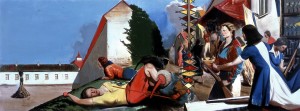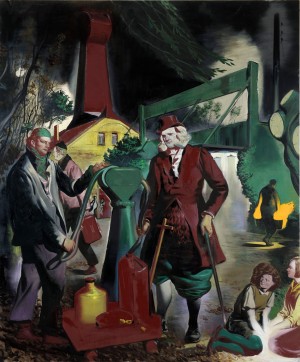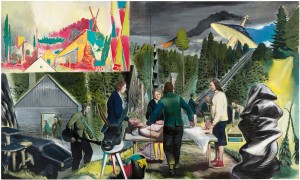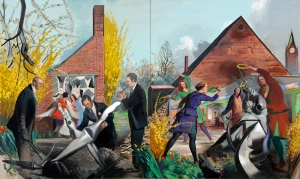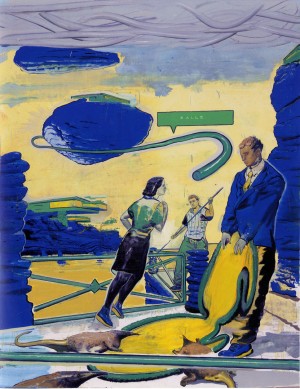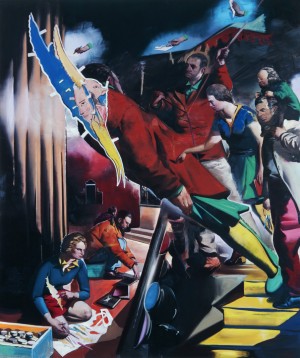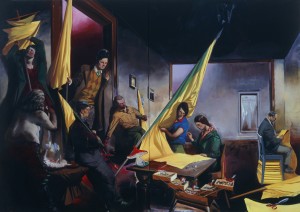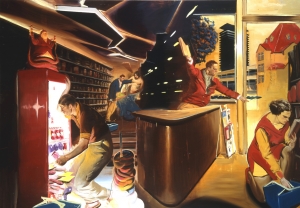Neo Rauch
Artist Bio
Neo Rauch was raised in communist East Germany. Upon encountering a united Germany in the early 1990s, Rauch assimilated and parodied the social realist ruins of communist art along with the popular imagery of capitalism. His unusual style, which renders contradictory and often competing sensibilities intelligible and seemingly unified, has given rise to a generation of painters in the Leipzig area as well as a dynamic gallery scene.
Rauch’s paintings share certain affinities with surrealism, namely the invocation of dreams as an escape from a rule-driven consciousness. Rauch himself, however, distances his work from easy readings. “I have no use for the cultishness of classic surrealism or for its tight repertoire of methods,” Rauch says, “In fact just the opposite is true: on my canvas, as in my mind, anything is possible.” Although highly interested in his own East German origins and the nature and limitations of its society, Rauch also channels German iconoclasts like Jörg Immendorff and Georg Baselitz to present a figurative work full of chronological fissures.
Warten auf die Barbaren, 2007, is a complicated and elusive image. Figures that would have emerged in Soviet and German social realist traditions—robust youths and submissive yet dedicated housewives—appear stripped of their dynamism and fixed in a sort of stasis. The painting shows a German nation caught in a surreal, jumbled world where communist architecture is found next to 1950s-style advertising and merchandise.
